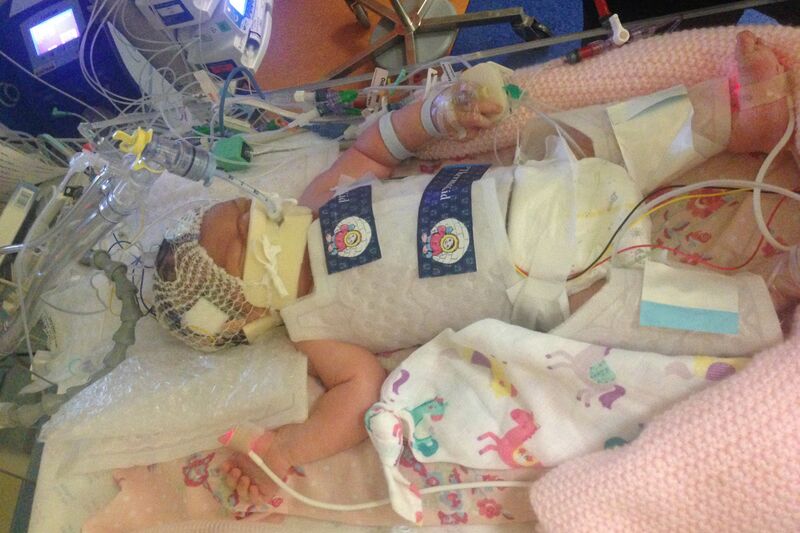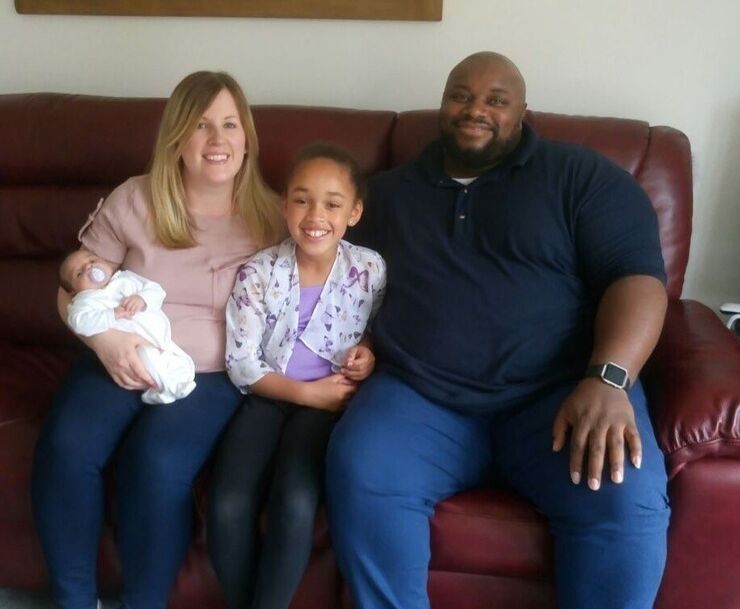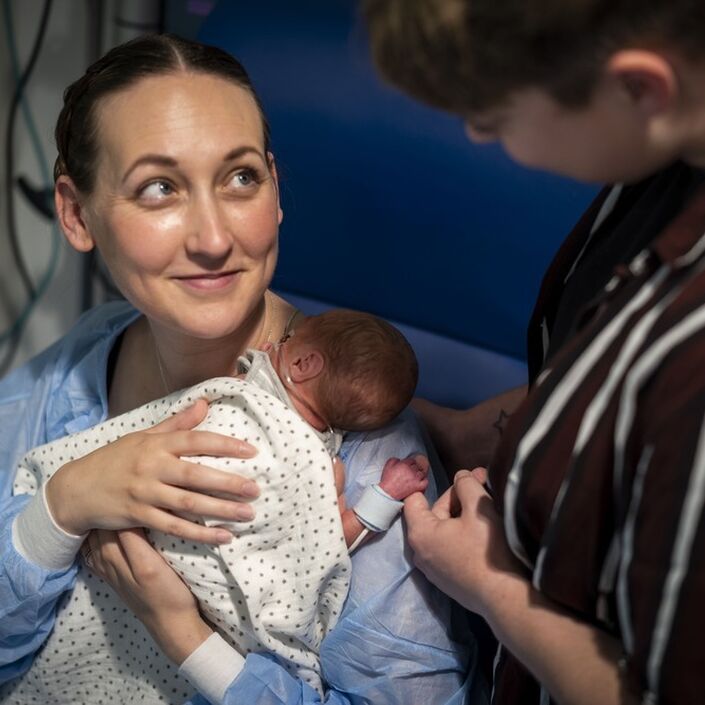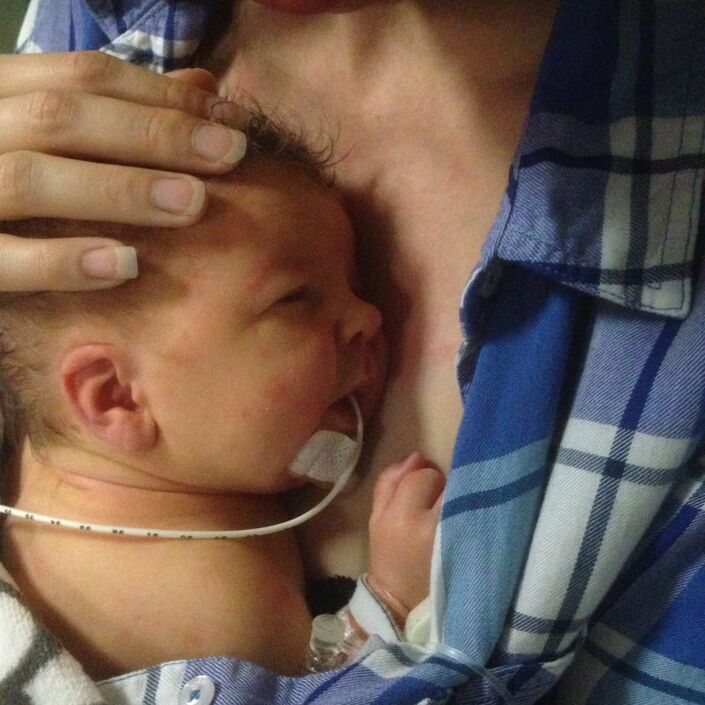It is very difficult for me to share some of my story but I believe that if only one expectant mother reads it and is prompted to stop and think about their baby’s movements it will be worth it.
I fell pregnant for the second time last autumn. We were excited that our nine-year-old daughter was going to have a little brother or sister.
On 12 April 2017, I went to the day unit at Princess Anne Hospital in Southampton because I hadn’t felt the baby move very much. I was 36+6 weeks and it was the first time that I had to go in outside of the scheduled routine appointments. I was still working full-time and was very busy getting ready for the baby’s arrival so hadn’t really noticed any change in movements beforehand. Looking back at it now, I still wonder if I should have become concerned sooner.
On the way to the hospital, I felt the baby move again and then felt another kick as I walked down the corridor. I almost turned round and went home because I didn’t want to waste my time. Thank goodness I decided to stay.
The midwife hooked me up and I saw on the screen the baby’s heart rate was normal. I felt instantly relieved and thought I’d be able to go home. Within 20 minutes however, the midwife had paged the registrar and suddenly the cubical was filled with people. They were checking my veins, measuring my legs for stockings and asking me how I was under general anaesthetic.
I was told that the baby’s cardiotocography (CTG) was poor and that the baby wasn’t moving much to conserve energy which isn’t a good sign. I was totally alone because I’d only popped in for reassurance and I was suddenly told that they were delivering the baby as soon as possible.
Within three hours of arriving at the hospital, my baby had been delivered via emergency c-section. Luckily my partner arrived just in time to be there to see her be delivered.
Because I was in such a state of shock and panic, I was unaware that the room suddenly filled up with people, but I realised the room was getting louder and I still hadn’t seen my baby.
I would later find out that there had been meconium in the baby’s amniotic sac and that she had scored zero on the Apgar scale.
After five minutes, her score had gone up to a three but this is still considered critical. Unknown to us, the neonatal team performed chest compressions – which did not work – and then a crash cart was brought out.
After three attempts, our daughter was successfully intubated and she was rushed off to the neonatal unit down the corridor.

I didn’t get taken down to the neonatal unit to meet my daughter, who we called Ella, until 11.00pm – six hours after she was born. When I saw her properly for the first time she had been ventilated, sedated and paralysed. The doctors were also cooling her body down with a suit to prevent any brain damage from the birth. Her body was so covered by both the suit and wires that we could only see a small part of her. Seeing Ella like this made me feel so numb. Being unable to touch or hold her made it difficult to feel a connection to her but I was desperate to study her and be near her.
The doctors then explained that Ella was critically ill and showing signs of brain damage. They were unable to investigate the extent of the damage because she was too poorly. We were told Ella also had Severe Neonatal Encephalopathy (HIE) grade three, Persistent Pulmonary Hypertension of the Newborn (PPHN) and was suffering seizures.
During those first few weeks in neonatal care, we were repeatedly told that Ella was critically ill. At a few days old Ella developed a severe lung infection called Meconium Aspiration Syndrome and was in desperate need of a procedure which acts as a lung bypass. The hospital did not perform the procedure so we were told that Ella would need to be transferred to Newcastle, Glasgow or London. It turned out that Ella was too unwell to be transferred and that other hospitals might not accept her because she also had neurological concerns that still needed to be investigated.

We were warned that Ella’s lungs could give up at any moment and she was placed on 100 per cent life support. The consultants wanted to help Ella get over her lung infection so they could look further into her brain injury because her electroencephalogram (EEG) wasn’t showing normal brain activity. The outlook seemed so bleak – we were asked if we wanted Ella blessed.
I started questioning and blaming myself – what did I do wrong? We began to agonise over how we would break the news to our daughter if her baby sister passed away. I told myself not to cry at Ella’s bedside and to only give her positive vibes by speaking to her and calling her the names I would call her when she was in my tummy hoping this would be a reassuring sound for her. I saved my tears for when we were back in the family room.
To everyone’s relief, Ella revealed just what a fighter she really was and overcame the lung infection. After two weeks she was stable enough to go for an MRI scan at Southampton General Hospital. This showed she had suffered severe brain damage, putting her at high risk of developing cerebral palsy. The strange thing was that her EEG was now showing normal activity for a baby. Her hearing tests revealed that she is moderately hearing impaired in one ear but has normal hearing ranges in the other. This should mean she’ll be able to hear well but she will have to be monitored over the years.

Ella is our miracle baby. When she decided she was ready she flew through the various rooms in the neonatal unit, taking everybody by surprise at how quickly she was improving. We were lucky enough to bring Ella home without oxygen or a feeding tube at 27 days old.
Ella’s consultant has been amazing and put a range of hospital and community support in place for us. At present, Ella is hitting all her milestones and receives weekly physio to ensure any mobility issues are addressed before they become a problem and all signs are positive so far.
Ella is such a happy baby and brings a smile to all who meet her. We still don’t know exactly what went wrong in the last trimester, although it has been suggested that there may have been blood clots preventing oxygen passing through the placenta.
I can’t stress enough how important it is to report any reduction in movement. Although we were able to bring our baby home at the end of our neonatal experience, it could have all been a very different story if I hadn’t gone into the hospital that day. We are so happy to have Ella in our lives and now can’t imagine life without her.



